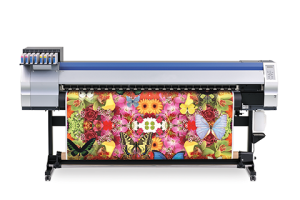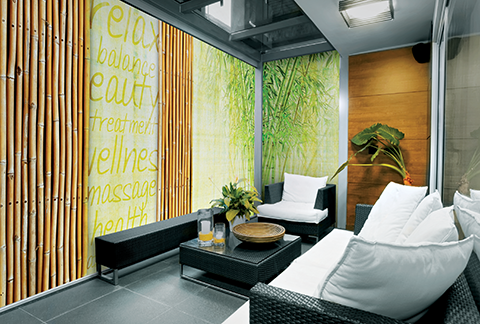By Peter Saunders
In November 2014, the European Specialist Printing Manufacturers Association (ESMA) organized the first-ever Printed Interior Decoration (PID) conference in Düsseldorf, Germany. The event reflected a growing interest in using digital inkjet printers to create wallpaper, room partitions and other interior décor applications.
The conference highlighted how the interior design and construction industries have their own standards and regulations that govern the nature of such graphics—including rules about washability, colourfastness, indoor air quality (IAQ) and flame retardancy—but suggested existing technology already allows print-service providers (PSPs) to become full contractors in the supply of décor applications.
“With a little help and expertise, many large-format PSPs can become important suppliers of interior decoration,” says Peter Buttiens, ESMA’s CEO and PID’s event organizer. “The décor sector could become as lucrative for them as the display and banner market is today. They have the equipment, but need further knowledge and new customers and professional partners.”
Buttiens promised the next PID, scheduled for November 2016, will feature a broader scope with designers, suppliers, PSPs and creative developers.
Customization and regulations
In recent years, concurrent developments in design software and digital printing technology have made it easier to customize indoor environments with short-run and one-off wallpaper, drapery, upholstery, window graphics, rugs, lampshades and pillows, among other décor applications. Original patterns and photos can be printed onto a growing number of suitable substrates for long-term indoor use.

Dye-sublimation printers designed for apparel applications that require image transfer onto polyester-based textiles can also be used for soft signage and some interior décor applications. Photo courtesy Mimaki
“There used to be no way to do short-run customization,” says Kevin Sykes, general manager (GM) of sign, display and inkjet press solutions for HP Canada. “Today, you can sit in an office and create surfaces with any design, at any size, with millions of colours, including skin tones that were traditionally difficult but can now be recreated in detail.”
These tools have been adopted by a wide variety of professionals, from wallcovering manufacturers creating their own proprietary-design collections to small print shops specializing in textile graphics, but they are also rooted squarely within the sign industry.
“Digitally printed wallcoverings and other textile-based applications have followed in the wake of soft signage, which became popular in the European market because of strict environmental laws,” says Carlo Toscano, president of Global Printing in Mississauga, Ont. “We’ve been to the Federation of European Screen Printers Associations (FESPA) show and what’s happening in North America is a repeat of Europe. Everyone is asking for printed textiles. They don’t want polyvinyl chloride (PVC) anymore.”
Global Printing is best-known for producing signs, banners and displays, but Toscano says interior décor applications have offered significant growth since the company recently began using durable aqueous ‘latex’ inkjet printers.
“We installed our first latex machine five years ago,” he says. “Right away, it increased our output. It cut our turnaround time by half. We have installed four since then and will continue to add more. We’re getting customer requests across the board from every sector, from banks to event organizers.”






